 I recently met with an entrepreneur who has an incredible product to offer the water conservation industry. As he quickly started rattling off schedules of ownership and budgets, I had to stop him because I wasn’t yet interested in the numbers or percentages involved. First, I wanted to determine whether I thought that both he and what he had to offer were authentic. And that got me to thinking about how most people in business focus only on what they can see: the product, the building, the budgets, the purchase orders. But what I believe should be a lot more important – at least in the initial phase of a proposition – are the intangible factors: such things as inspiration, ego, fear or insecurity that a sharp investor can discern in the course of conversing with an entrepreneur or management team. So I’d like to offer those involved in evaluating prospective business relationships (as well as in everyday interactions with clients) a few tips on what I call the art of focusing on what you can’t see.
I recently met with an entrepreneur who has an incredible product to offer the water conservation industry. As he quickly started rattling off schedules of ownership and budgets, I had to stop him because I wasn’t yet interested in the numbers or percentages involved. First, I wanted to determine whether I thought that both he and what he had to offer were authentic. And that got me to thinking about how most people in business focus only on what they can see: the product, the building, the budgets, the purchase orders. But what I believe should be a lot more important – at least in the initial phase of a proposition – are the intangible factors: such things as inspiration, ego, fear or insecurity that a sharp investor can discern in the course of conversing with an entrepreneur or management team. So I’d like to offer those involved in evaluating prospective business relationships (as well as in everyday interactions with clients) a few tips on what I call the art of focusing on what you can’t see.
Focusing on what I can’t see, in fact, has become an increasingly significant part of my own approach to forging connections with people, both professionally and personally. That’s because as I think back over the rough spots or failures I’ve experienced, I can clearly identify some personality issue that I didn’t notice or take into consideration at the beginning as having been a major factor in each instance. So during the aforementioned meeting, I proceeded to devote more than an hour to the process of getting to know this particular entrepreneur before getting around to his product or the numbers related to it. I was quite open and aboveboard about wanting to know more about him – for example, what made him tick, what he hoped to take out of the business, what his father’s profession was, what his personal values were and what he thought someone should always remember about him.
The stories that came flowing out as a result led me to a much better understanding of his aspirations, what he wanted out of life, his expectations, beliefs and principles, what kind of a difference he hoped to make in the world, what he would be willing to stand up for when push came to shove, and whether this was someone I would want with me in a crisis or a life-or- death situation. I thus felt like I was in a much better position to ascertain whether this was the type of individual in whom I wanted to invest my time, since I consider time an even more valuable commodity than whatever money might be involved (as well as also being something you can’t see).
So my question to you is: what are the key things you really want to know about an individual prior to forming a professional relationship with them? In typical meetings to determine the viability of potential partnerships, everyone’s attention is usually focused on whatever facets can be included in a PowerPoint presentation — palpable things such as numbers, projections, project plans and schedules. But what if instead we were to zoom in on the ones that aren’t presented to us on a platter? What if we left the meeting, and rather than discussing figures, calculations and and potential markets, we talked about our impressions of the individual with whose venture we were considering becoming associated? Was the conversation a frank and transparent one, or did the person seem guarded and cagey when questioned? Did he (or she) have a confident yet easygoing manner that seemed amenable to compromise? Were they just trying to impress us with their charisma, or had they offered solid evidence of character and trustworthiness – for example, by talking about a long-term relationship with their work force that reflected a mutual sense of loyalty? Did they come across as all business, or exhibit a genuine sense of humor and of humanity?
Now, suppose you were to further try this approach with a big customer — no PowerPoint, no agenda, just an honest, personal and sincere attempt to understand the individual you were dealing with in a manner to which they were probably quite unaccustomed. What makes this technique so unique is that it requires a certain depth of understanding on the part of both parties. It could conceivably become so uncomfortable that you might well wish you had opted for the more businesslike and aloof approach. My feeling, though, is that you will end up strengthening the relationship and gaining a deeper understanding of how you can help your customer, client or friend.
But what I would especially recommend is that in forming a new business relationship, you set the facts, numbers and product performance aside and begin by focusing on what isn’t outwardly apparent. And if after your initial meeting you can answer the question, “Is this the sort of person I want to invest my time in?” then you can consider the outcome successful. Once you’ve established that in your own mind, you can go on to the other stuff – the numbers and the actual details of the business— in due time. But while you’re working out the facts and figures, you will have formed a bond of mutual trust that could never be broken by, say, missing a quarterly number or some component of due diligence.
In a sense, sizing up a potential business partner by focusing on what makes him tick and the things you can’t readily see is really no different from what companies do every day use in evaluating how good a fit an applicant is for a particular position. Does anyone you’ll be welcoming into your orbit, be it on a personal or professional basis, merit any less of an advance assessment?

